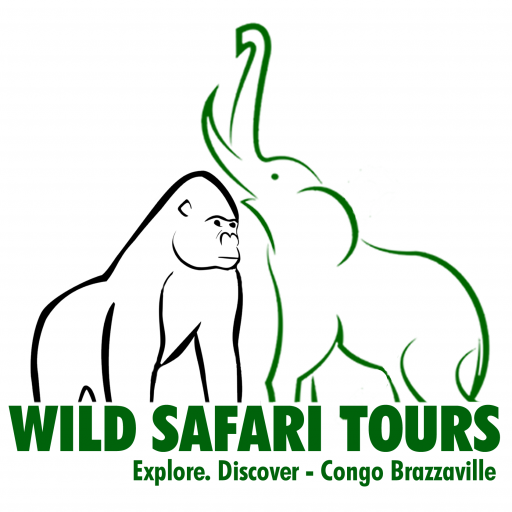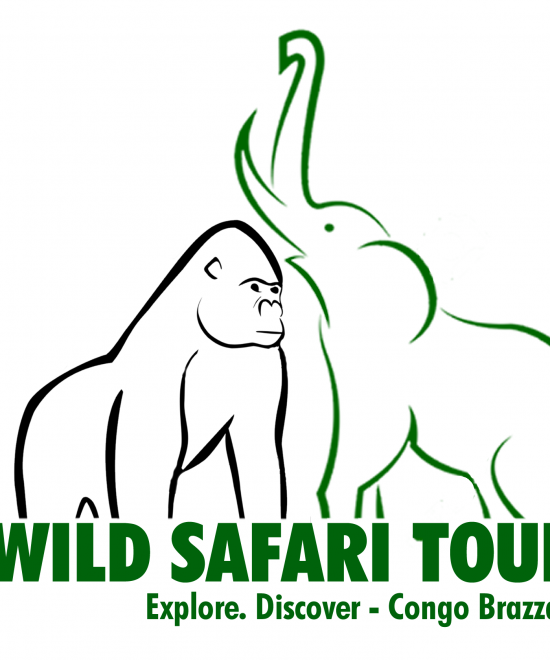Central African Republic
The Central African Republic, commonly known as the or the Centrafriquea or RCA, in Sango Ködörösêse tî Bêafrîka, is a developing central African state, with an estimated population of 4,500,000 inhabitants in 2020, for an area of approximately 623,000 km2. It is surrounded by Cameroon to the west, Chad to the northwest, Sudan to the northeast, South Sudan to the east, the Democratic Republic of the Congo to the southeast, and the Republic of Congo to the south -Where is. The country is a member of the African Union, the Central African Economic and Monetary Community, the Community of Sahel-Saharan States and the Organization of Islamic Cooperation.
The country is divided between savannas and equatorial forest (in the south), and essentially experiences a tropical climate. The Central African Republic also has many natural resources, including uranium, gold, diamonds and oil.
The territory of the Central African Republic corresponds to that of the French colony of Oubangui-Chari, which was part of French Equatorial Africa from 1910 to 1960. After independence, the country was headed by various authoritarian regimes, in particular that of Jean-Bedel Bokassa, president, then self-proclaimed emperor. France, a former colonial power, continues to play an important role there. The first free elections with multiparty politics took place in 1993. They brought to power Ange-Félix Patassé, overthrown in 2003 by François Bozizé. The latter, re-elected in 2005 and 2010, was in turn overthrown in 2013 by the Seleka, an alliance of militias led by Michel Am-Nondokro Djotodia, during the second Central African civil war. In 2016, Faustin-Archange Touadéra was elected President of the Republic.
History
From the third millennium BC, the establishment and vigorous expansion on Central African soil of populations speaking the languages of the Adamaoua-Oubangui group opposed the Bantu expansion which then found an outlet towards the South and the Eastern Mainland 7.8. The original geographic nucleus of the Adamaoua-Oubangui language populations would be very close because it is located in the Adamawa massif on the borders of present-day Cameroon, Nigeria, Chad and the Central African Republic. On the other side of the western foothills of the Adamaoua (which culminates at 3,400 m at Tchabal Mbabo in the Gotel Mountains) was located, on the Cross River, the original nucleus of the Bantu populations. The two groups of populations will experience, in the third millennium, a simultaneous expansion following the domestication of yam and oil palm9.
The solid establishment of the Adamaoua-Ubangian language populations in the territory is due to their mastery of agricultural crops both in dry forest areas (learned from farmers speaking the languages of the Sudan-Central group) and in humid forest areas, a dual skill that the Bantus did not have at that time. The presence of agriculture in the Central African Republic is proven from the middle of the second millennium BC. The Adamaoua-Ubangu-speaking populations completed their establishment throughout the current Central African Republic around the beginning of the 1st millennium BC, while the maximum geographical extension of these populations was reached towards the beginning of the Christian era. The inhabitants who had preceded them (pygmies and central Sudanese) on the territory of the current Central African Republic are then either assimilated or marginalized.
Megaliths of Bouar.
A megalithic civilization that lasted until the 1st century AD. AD develops in the region of Bouar (West). It is the appearance of iron metallurgy which seems to have put an end to the civilization of the megaliths (Tazunu in gbaya) . Iron metallurgy spreads from west to east and is accompanied by an expansion of the population. which is considered to have reached 6 million inhabitants throughout the Central African territory in the eighteenth century. The populations would then have lived in relative autarky because they were away from the main African trade routes.
Between the archaeological beginnings and the period immediately preceding colonization, approximately 1,700 years, data concerning the history of the territory occupied by the Central African Republic is scarce or not readily accessible to the general public. It is probable that like many peoples established in the equatorial zone, the populations of the region did not feel the need to organize themselves around state structures but rather retained a system of local chiefdoms. In retrospect, and given the supposed demographic expansion of the population (six million inhabitants), one wonders if this system was not perhaps more efficient than many others. The major flaw of this very superficial political organization, however, is that it was unable to protect the populations of the Adamaoua-Ubangu languages from the trials which were to arise during the contemporary period.
Zande expansion
The most spectacular historical phenomenon that the region has experienced during this period concerns the Zandé. Around the 15th century, clans from Darfur or Kordofan migrated to Uele and Ubangi.
This aristocracy of lords will gradually impose themselves on the local populations while adopting its culture. A dozen Zandé kingdoms are thus formed. The organization of power put in place by the Zandé rulers made a certain impression on the first European travelers.
Across the current Central African territory, it is considered that the inhabitants lived in small scattered villages cultivating sorghum in the north and plantains in the south. The level of political organization was low and local societies often troubled by quarrels. The fact that these societies are very similar to those encountered in central Cameroon suggests that a certain level of communication has endured between the two regions over the millennia.
Politics
The Central African Republic is a presidential republic where the president is both head of state and head of government. Executive power is held by government while legislative power is shared between government and parliament.
From March 24, 2013, the date of his seizure of power by force, to January 10, 2014, the date of his resignation, Michel Djotodia fulfills the function of President of the Republic and Nicolas Tiangaye exercises the function of Prime Minister. After their resignation, the interim is provided by Alexandre-Ferdinand N’Guendet, president of the National Transitional Council who then elects Catherine Samba-Panza as Head of the Transitional State of the Central African Republic. She was sworn in on January 23, 2014 and on 25, she appointed Prime Minister André Nzapayeké.
Following the Brazzaville talks, a ceasefire agreement was signed on July 23, 2014 with the condition of the formation of a government of national unity [ref. necessary. On August 10, 2014, Mahamat Kamoun was appointed Prime Minister of the government of national unity at the head of a government of 30 members where women are highly represented. Faustin-Archange Touadéra becomes president on March 30, 2016 and its head of government is Simplice Sarandji.
Culture
Central African culture is diverse between peoples and ethnicities.
Aka woman dancing in the forest
Central African fashion
Most Central Africans (80%) speak languages of the Adamaoua-Oubanguien group of the Niger-Congolese family. In the north of the country live populations speaking Nilo-Saharan languages (the Sara for example). In the savannah regions of CAR are scattered various communities of nomadic Fulani the Mbororo. The vast majority of Central Africans are therefore not of “Bantu” culture. Certain ethnic minorities, living in the south-west of the country, are however Bantu, peoples common to the Congo and Cameroon. The Central African population is subdivided into a myriad of populations. Thus, each “big” city has its people, its language and a recent history linked to the political figures and men of power who come from it. The Pygmies are a visibly different people, because of their size, and their culture of people of the forest. Long and overwhelmingly considered second-class humans, they have preserved their habits, and maintain themselves in their environment, without access to the minimum “social progress” that the country has seen. Finally, with arbitrary and porous borders, we find all the groups from neighboring countries. Thus, a growing part of the population, in particular on the north-south axis running from Chad to the capital, is linked to the Muslim culture.
Economy
In the Central African Republic, per capita income was $ 446 in 201247. Agriculture accounts for 50% of GDP, and livestock alone 12.7%.The country has deposits of aluminum, copper, gold, diamonds, uranium and oil wells.
Agriculture and forestry
Harvesting and conditioning of cassava.
The main crops are cassava (cassava), bananas, maize, coffee, cotton and tobacco.
The soil potential is estimated at 15 million hectares (150,000 km2).
The north-west and the center of the country represent an important agricultural basin for the cultures of cotton and sugar cane. However, the weakness of infrastructure and support for production, which remains mostly extensive, severely limits yields, which are much lower than those in neighboring countries. The country’s isolation remains a major handicap.In 2009, breeding relied on a herd of around 15 million heads. The Central African Republic had an average score on the 2019 Forest Landscape Integrity Index of 9.28, ranking it seventh out of 172 countries. Logging is a major contributor to GDP, with significant tropical timber resources. The Central African forest covers an area of 3.8 million hectares (38,000 km2). From the beginning of colonization, we exploited the rubber tree for its latex, today the essences are more diversified. The less noble are processed locally by a small plywood industry, while the more valuable are exported without processing in the form of logs.
Oil
The first oil drilling was carried out in the early 1980s by the American oil company Esso. President Patassé granted an operating license to the American company Grynberg in 2000, but it expired in 2004. The American government is closely monitoring the situation there. Oil from Gordil, on the Chadian border, was granted by the regime of François Bozizé in 2012 to the Chinese from the China National Petroleum Corporation. He later claimed that he was “overthrown because of the oil” because he “gave the oil to the Chinese and it became a problem”. One billion barrels of oil are believed to be present in the subsoil of the country, mainly in the north, near the border with Chad, some experts speaking of up to 5 billion barrels.Four promising oil sites are identified: Bagara, Doseo, Salamat and Doba / Bango.
Uranium
In the 1960s, a deposit of uranium phosphates was discovered in Bakouma by the French Atomic Energy Commission50. The Central African Republic has around 20,000 tonnes of uranium reserves. The nuclear group Areva signed in August 2008 with the power of François Bozizé, a contract of 18 billion CFA Francs (27 million euros) over 5 years for a project of the uranium deposit in Bakouma, 900 km to the north. -est of Bangui. However, Areva has given up exploiting it due to insecurity and the global drop in uranium prices due to the Fukushima nuclear accident in 2011.
Diamonds
Carbonado from the southwest of the country
Manual exploitation of a stone quarry.
The production of very good quality alluvial diamonds (jewelry diamonds) amounts to around 500,000 rough carats per year. The Central African Republic is ranked fourth or fifth in the world for their quality. Real production is difficult to estimate, about double; there is significant contraband in this sector. The production, the trade, as well as the cutting of diamonds, are activities which are regularly the object of plans to nationalize them, or on the contrary to liberalize them. Central African heads of state have always profited from diamonds; Jean-Bedel Bokassa (1966-1979) used them for diplomatic purposes, such as during the diamond affair with French President Giscard d’Estaing. The exploitation of diamonds fuels the various armed groups and the violence in the country. In 2013, the Central African Republic was suspended from the Kimberley process aimed at fighting blood diamonds.


